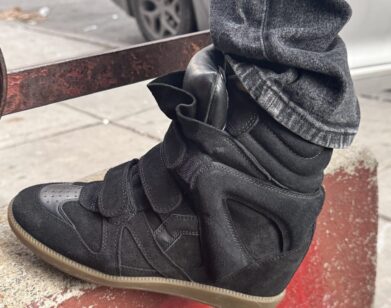Thomas Tait
I wanted there to be a lot of energy in the clothing and the fabrics.”-Thomas Tait
Thomas Tait‘s architectural overcoats, tailored trousers, and geometrically layered looks don’t exactly flaunt the feminine form. But the 25-year-old London-based wunderkind, who launched his own womenswear label in 2010, spends a lot of time thinking about women’s bodies—and about how women think about their bodies. “Not everyone feels confident running around in a minidress,” says Tait. “And if you’re not confident in your clothes, you’re not attractive.”
This humane approach to dressing reigned in Tait’s Spring 2013 collection. Focusing on structure—think sculpted zibeline bubble coats and boxy culottes with deliberate, exaggerated pleats—he showed airy, high-volume garments that encase the body in a fortress of sharp but capacious layers. For Tait, that emphasis on covering served as a sense of liberation. “I wanted there to be a lot of energy in the clothing and the fabrics,” he says about the collection. A stickler for details, Tait feels the finishings and linings of his clothes are just as important as their striking exteriors. “The inside of the garment should be as beautiful as the outside,” he explains. “That’s how you can tell if it’s created for the woman to enjoy rather than for other people to look at.”
Born in Canada, Tait grew up in a sleepy suburb outside Montreal—”I lived in my head and imagined things,” he remembers—and headed to London’s Central Saint Martins College of Arts & Design in 2008. At 22, he became the youngest designer ever to graduate from the school’s prestigious MA fashion program. In 2010, he won the coveted Dorchester Collection Fashion Prize after presenting his debut collection. But Tait is humble about his start. “My work is really personal,” he says. “I’m young. I don’t know it all, but I’m learning every day.”
Fashion editors have observed Tait’s austere, minimal style is a contrast to the playful, exuberant, print-heavy bravura found in the collections of many young London designers. But Tait argues that his work isn’t so different from his peers-it’s simply subtler. “I do use prints,” he says. He also swears there’s a playful note in everything he does, noting these traits may only appear when one looks very closely. “You get one idea in your head when you first see the clothes,” he says. “But when you experience them, touch them, and wear them, it’s a completely different journey.”







